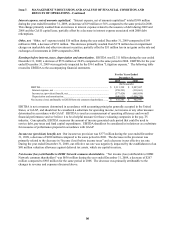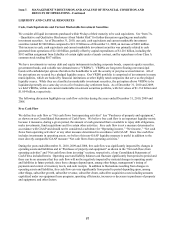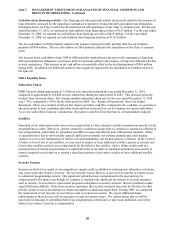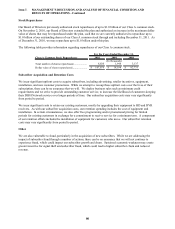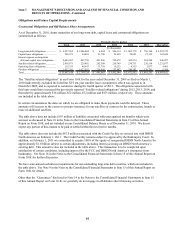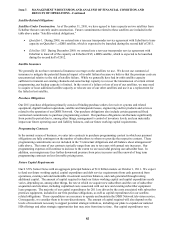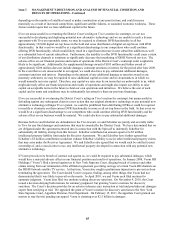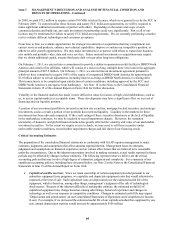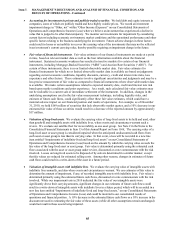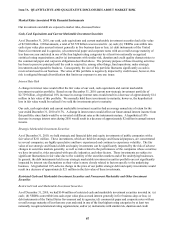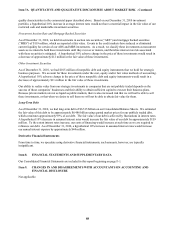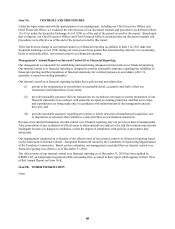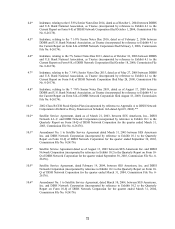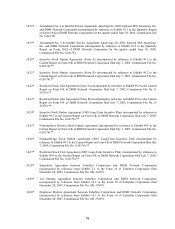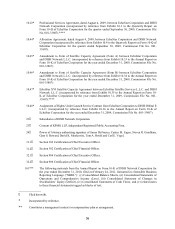Dish Network 2010 Annual Report Download - page 73
Download and view the complete annual report
Please find page 73 of the 2010 Dish Network annual report below. You can navigate through the pages in the report by either clicking on the pages listed below, or by using the keyword search tool below to find specific information within the annual report.Item 7. MANAGEMENT’S DISCUSSION AND ANALYSIS OF FINANCIAL CONDITION AND
RESULTS OF OPERATIONS - Continued
66
66
• Income taxes. Our income tax policy is to record the estimated future tax effects of temporary differences
between the tax bases of assets and liabilities and amounts reported in the accompanying consolidated balance
sheets, as well as operating loss and tax credit carryforwards. Determining necessary valuation allowances
requires us to make assessments about the timing of future events, including the probability of expected future
taxable income and available tax planning opportunities. We periodically evaluate our need for a valuation
allowance based on both historical evidence, including trends, and future expectations in each reporting
period. Any such valuation allowance is recorded in either “Income tax (provision) benefit, net” on our
Consolidated Statements of Operations and Comprehensive Income (Loss) or “Accumulated other
comprehensive income (loss)” within “Stockholders’ equity (deficit)” on our Consolidated Balance Sheets.
Future performance could have a significant effect on the realization of tax benefits, or reversals of valuation
allowances, as reported in our consolidated results of operations.
• Uncertainty in tax positions. Management evaluates the recognition and measurement of uncertain tax
positions based on applicable tax law, regulations, case law, administrative rulings and pronouncements and
the facts and circumstances surrounding the tax position. Changes in our estimates related to the recognition
and measurement of the amount recorded for uncertain tax positions could result in significant changes in our
“Income tax provision (benefit), net,” which could be material to our consolidated results of operations.
• Contingent liabilities. A significant amount of management judgment is required in determining when, or if,
an accrual should be recorded for a contingency and the amount of such accrual. Estimates generally are
developed in consultation with outside counsel and are based on an analysis of potential outcomes. Due to the
uncertainty of determining the likelihood of a future event occurring and the potential financial statement
impact of such an event, it is possible that upon further development or resolution of a contingent matter, a
charge could be recorded in a future period to “General and administrative expenses” or “Litigation expense”
on our Consolidated Statements of Operations and Comprehensive Income (Loss) that would be material to
our consolidated results of operations and financial position.
New Accounting Pronouncements
Revenue Recognition – Multiple-Deliverable Arrangements
In October 2009, the Financial Accounting Standards Board (“FASB”) issued Accounting Standards Update 2009-13
(“ASU 2009-13”), Revenue Recognition - Multiple-Deliverable Revenue Arrangements. ASU 2009-13 changes the
requirements for establishing separate units of accounting in a multiple deliverable arrangement and requires the
allocation of arrangement consideration to each deliverable to be based on the relative selling price. This standard is
effective January 1, 2011. We do not expect the adoption of ASU 2009-13 to have a material impact on our
financial position or results of operations.
Seasonality
Historically, the first half of the year generally produces fewer new subscribers than the second half of the year, as is
typical in the pay-TV service industry. However, we can not provide assurance that this will continue in the future.
Inflation
Inflation has not materially affected our operations during the past three years. We believe that our ability to increase
the prices charged for our products and services in future periods will depend primarily on competitive pressures.
Backlog
We do not have any material backlog of our products.


